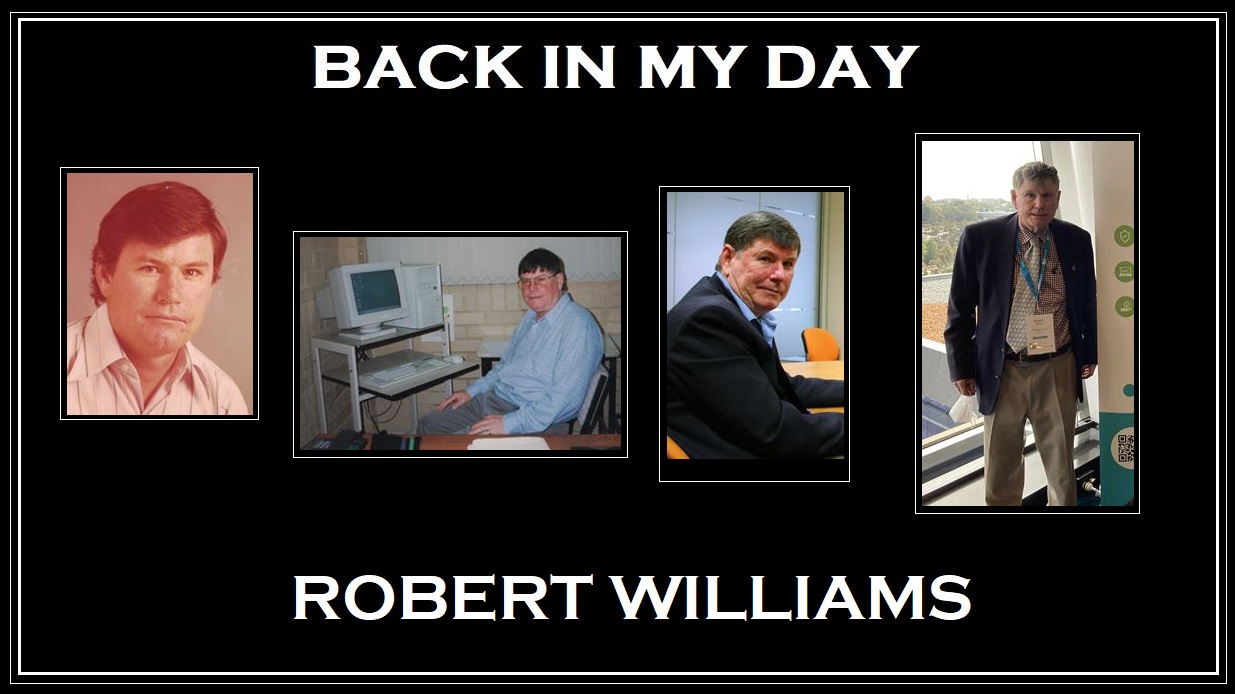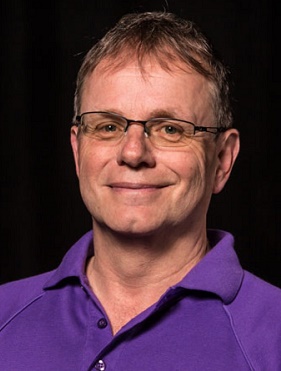‘Back in My Day’ is a new Information Age series profiling some of our older ACS members and Information Age readers speaking about their early days in IT.
This week, we speak with Robert Williams PhD, aged 77, from Perth, Western Australia.
Where did your computing journey start?
I grew up in Perth and my interest in computers was sparked by my interest in maths, starting in the fifties when I was at school.
With great maths results in my final year, I enrolled in a science degree at the University of Western Australia (UWA), majoring in maths.
Back then there were no computing subjects available.
To broaden my knowledge of the humanities during my studies I switched from science to arts, while still studying maths, and added psychology and economics to my qualification, graduating in 1966.
How did you transition from this to working with computers?
I applied for the highly competitive Commonwealth Government Programmer in Training (PIT) scheme, where only the top 5% of applicants were accepted, and was offered a place with the Australian Bureau of Statistics (ABS) in 1967.
After relocating to Canberra to undertake the PIT course, I spent many weeks learning how to program Control Data 3300 and 3600 mainframes in Fortran, alternating between classroom lessons and office work.
Unfortunately, before completing PIT, I developed schizoaffective disorder (a combination of schizophrenia and bipolar disorder) and moved into a job as an ABS graduate clerk.
After a year in this role, and with my computing career having stalled, I returned to Perth.
Did your condition improve?
Not for a long time and my illness made it extremely difficult to find or hold down a job.
This meant I was unable to pursue my passion for computing and ended up working as a laundry van driver, and doing labouring and other odd jobs.
Because of my illness I was frequently sacked and once ended up sleeping in my car for a week.
My condition didn’t improve for years and I was eventually admitted to the old Heathcote Hospital, a psychiatric facility, where I received Electro Convulsive Therapy (ECT).
After being prescribed appropriate anti-psychotic medication my condition improved to a point where I was released from Heathcote four months later.
Were you able to resume the life you had known?
Yes, to some extent.
I’d managed to get a job at David Jones as a costing clerk and later commenced a Graduate Diploma in Computing at the Western Australian Institute of Technology (WAIT) to try and get back into the industry.
During that time, in 1976, I also applied for a computing assistant job in the Maths Department of UWA (from which I had graduated) and was successful in obtaining it.
Despite the setbacks, I could now resume my career.
How was the job in the Maths Department?
Absolutely superb.
Apart from working with some brilliant people, the facilities were excellent and included a Control Data Cyber 70 mainframe and a DEC System 10, on which I was writing Fortran code for mathematical algorithms.
My job also involved a lot of plotting, for which I would code the plots and save them onto tape, then mount these on the huge flatbed plotter, with coloured pens going in all directions.
At the same time as working at UWA, I was finishing my Computing Diploma with WAIT and the Maths Department was very generous in letting me do my assignments on their machines, punch up my cards, and run the code on their System 10.
This allowed me to debug the code at UWA, and I’d then convert it to the ICL code that ran on the ICL 1900 mainframe computer at WAIT.
Where did you go next?
After UWA I took a role with the Department of Main Roads, where I remained for seven years.
My job there involved writing Fortran and COBOL code for road and bridge engineering, and accounting, on a Control Data Cyber 170 machine, and later on an IBM 370.
From there I moved to the Western Australian College of Advanced Education (WACAE) for five years as an analyst/programmer, later working as a senior systems analyst in charge of financial systems, looking after a 100,000 line COBOL accounting system and managing several programmers.
There were seven of us in the team, working on a new Wang VS100 minicomputer with 100 terminals, for which we wrote student record systems, an asset register, and accounting systems.
Did you undertake further study?
Yes, after my Graduate Diploma I completed a Master of Information Systems from Curtin University to stay updated.
But perhaps my biggest academic achievement was completing a Doctor of Philosophy in Automated Essay Grading from Curtin University in 2012.
How did this happen?
Many years later, I was at Curtin University as a lecturer and we received an Australian Research Council linkage grant of $740,000 to develop automated essay grading systems.
I’d worked in this area for several years prior to the grant and had published many papers, as well as delivering international conference presentations, and in recognition of my contribution I was awarded a PhD.
Did this project extend beyond academia?
Yes, a colleague started a company called Rembiont Pty Ltd, of which I’m now co-owner, and we further developed the automated essay grading technology into a unique service for school students.
Called NAPLearn, it’s offered online by subscription and has been specifically designed to help students succeed in the essay writing component of NAPLAN tests by providing accurate and comprehensive feedback in seconds.
Although I’m now semi-retired, I still occasionally write code for NAPLearn, which uses C#, Java, HTML and Bootstrap technology.
Looking back, what would you say are your career highlights?
I enjoy teaching and ended up spending more than 20 years in that role, lecturing in programming, systems analysis and design, software selection, and project management, and managing third-year student industry projects.
I also fondly remember doing my first ever conference presentation, at the Australian Conference on Information Systems in Hobart in 1996, on the personality traits of satisfied computer users.
Since then I’ve done many others, in the US, UK, Italy, China, New Zealand and Malaysia.
What’s the most interesting aspect of the IT industry?
The creativity.
You can think through a problem, and how you’d tackle it, and can then move into implementing and coding up your solution.
To do this well you have to like detail, where a full stop or comma goes, and if you don’t like that perhaps you shouldn’t be a coder. Other IT roles may be more suitable.
How does the future look for you?
We’re looking at an exit strategy for Rembiont in the next few years but I’m also strongly committed to mental health support.
For decades I volunteered for my local Catholic Outreach parish committee, and later served as chairman of the management committee in Perth.
Overall, I believe you should never give up when faced with difficulties, but always look for solutions; being an analyst has helped me in this regard.
If you do get a mental illness these days, although it’s very confusing and distressing, with the right medication and treatment there’s hope; it’s not a death sentence.
And if anybody would like to talk about mental health issues with me, I’d be glad to have a chat.










